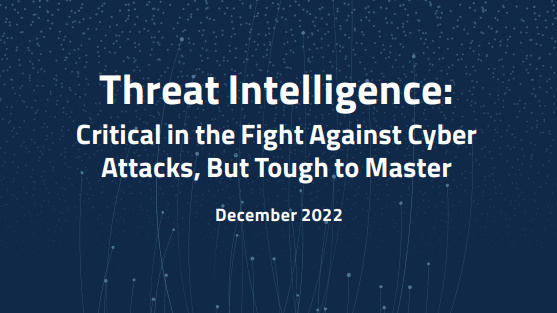Russian military targeting Linux systems with Drovorub malware
The NSA and FBI warn the malware is being deployed in real-world espionage attacks by the group known as Fancy Bear


Critical US national security systems running Linux are being targeted with malware as part of cyber espionage campaign spearheaded by a division of the Russian military, also known as Fancy Bear or ATP28.
The Drovorub malware is targeting Linux systems operated by US national security agencies, the Department of Defense, and the US government’s industrial assets directly relevant to producing equipment for armed forces.
The malware is being deployed by the division of the GRU, also publicly known as Strontium, as part of the organisation’s cyber espionage operations, according to an advisory published by the FBI and the NSA.
The jointly-published advisory offers detailed technical information on Drovorub, guidance on how to detect the malware on infected systems, and mitigation recommendations. The malware itself compromises an implant coupled with a kernel module rootkit, a file transfer and port forwarding tool, and a command and control (C2) server.
When deployed on a Linux machine, the Drovorub client paves the way for direct communication with the C2 infrastructure, allowing for file download and upload capabilities, execution of arbitrary commands as "root", and port forwarding of network traffic to other hosts on the network. The malware also implements hiding techniques to evade detection.
"This Cybersecurity Advisory represents an important dimension of our cybersecurity mission, the release of extensive, technical analysis on specific threats," said NSA cybersecurity director Anne Neuberger.
"By deconstructing this capability and providing attribution, analysis, and mitigations, we hope to empower our customers, partners, and allies to take action," she said. "Our deep partnership with FBI is reflected in our releasing this comprehensive guidance together."
Get the ITPro daily newsletter
Sign up today and you will receive a free copy of our Future Focus 2025 report - the leading guidance on AI, cybersecurity and other IT challenges as per 700+ senior executives
RELATED RESOURCE

Rethink your cybersecurity strategy for the new world
5 steps to secure the enterprise and be fit for a flexible future
The advisory suggests that organisations running Linux systems to apply any system updates immediately, by continually checking for the latest version of vendor-supplied software. Specifically, system administrators should update to Linux Kernel 3.7 or later in order to take advantage of kernel signing enforcement.
System owners are also being advised to configure their systems to load only modules with a valid digital signature, making it more difficult for a hacker to introduce a malicious kernel module into the system.
System administrators should also activate UEFI-Secure Boot to ensure only signed kernel modules can be loaded. This would, of course, require a UEFI-compliant platform configured in UEFI native mode in Thorough or Full enforcement mode.
"For the FBI, one of our priorities in cyberspace is not only to impose risk and consequences on cyber adversaries but also to empower our private sector, governmental, and international partners through the timely, proactive sharing of information," said FBI assistant director, Matt Gorham.
"This joint advisory with our partners at NSA is an outstanding example of just that type of sharing," he added. "We remain committed to sharing information that helps businesses and the public protect themselves from malicious cyber actors."
Research from Blackberry outlined earlier this year previously identified Chinese-sponsored hackers as targeting Linux servers in order to steal intellectual property. Compromising Linux web servers in this way that these hackers had done allowed them to steal massive amounts of data disguised as conventional web traffic.

Keumars Afifi-Sabet is a writer and editor that specialises in public sector, cyber security, and cloud computing. He first joined ITPro as a staff writer in April 2018 and eventually became its Features Editor. Although a regular contributor to other tech sites in the past, these days you will find Keumars on LiveScience, where he runs its Technology section.
-
 Three ways to evolve your security operations
Three ways to evolve your security operationsWhitepaper Why current approaches aren’t working
By ITPro
-
 Beat cyber criminals at their own game
Beat cyber criminals at their own gameWhitepaper A guide to winning the vulnerability race and protection your organization
By ITPro
-
 Quantifying the public vulnerability market: 2022 edition
Quantifying the public vulnerability market: 2022 editionWhitepaper An analysis of vulnerability disclosures, impact severity, and product analysis
By ITPro
-
 Same cyberthreat, different story
Same cyberthreat, different storyWhitepaper How security, risk, and technology asset management teams collaborate to easily manage vulnerabilities
By ITPro
-
 Business value of ServiceNow security operations
Business value of ServiceNow security operationsWhitepaper Experience transformational gains from automating workflows and data-sharing among IT, security, and risk teams to rapidly remediate threats
By ITPro
-
 Cybercriminals are resilient. How about you?
Cybercriminals are resilient. How about you?Whitepaper Stay ahead of those agile bad actors
By ITPro
-
 Threat Intelligence: Critical in the fight against cyber attacks, but tough to master
Threat Intelligence: Critical in the fight against cyber attacks, but tough to masterWhitepaper Discover why many claim Threat Intelligence is extremely important in protecting their company and data
By ITPro
-
 State of ransomware readiness 2022
State of ransomware readiness 2022Whitepaper Reducing the personal and business cost
By ITPro

